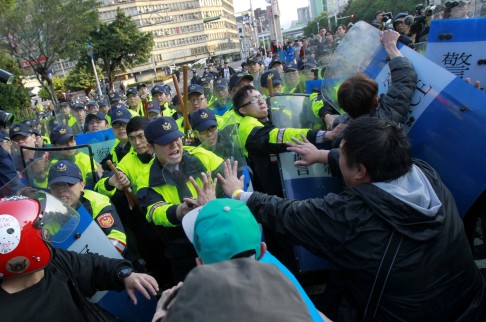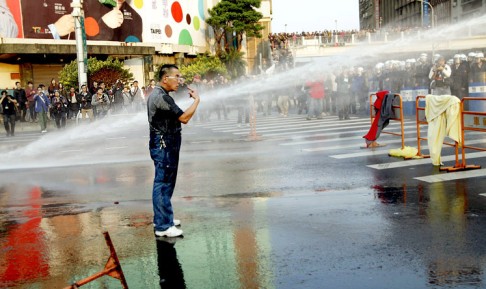Update | More than 150 injured as police evict student protesters from Taiwan parliament
More than 150 people were injured and 61 students arrested after riot police armed with batons and water cannon waded in to break up a protest over a trade pact with China at Taiwan's parliament in the early hours of Monday.

More than 150 people were injured and 61 students arrested after riot police armed with batons and water cannon waded in to break up a protest over a trade pact with China at Taiwan's parliament in the early hours of Monday.
Seven waves of police brandishing riot shields marched towards students forcing them away from the courtyard of the Executive Yuan building, which demonstrators had broken into hours earler, after President Ma Ying-jeou failed to soothe public anger at his administration's handling of the free-trade pact with the mainland.
Demonstrators chanting "No more police brutality" and "Police back off" laid down and linked arms and legs in an effort to halt the eviction from the cabinet compound, while others lashed out at police before being beaten back with batons and, as dawn broke, water cannon.
Defiant students, some bleeding and bruised, pledged to continue their protest over the ruling party's decision to renege on a promised line-by-line review of the trade agreement.
